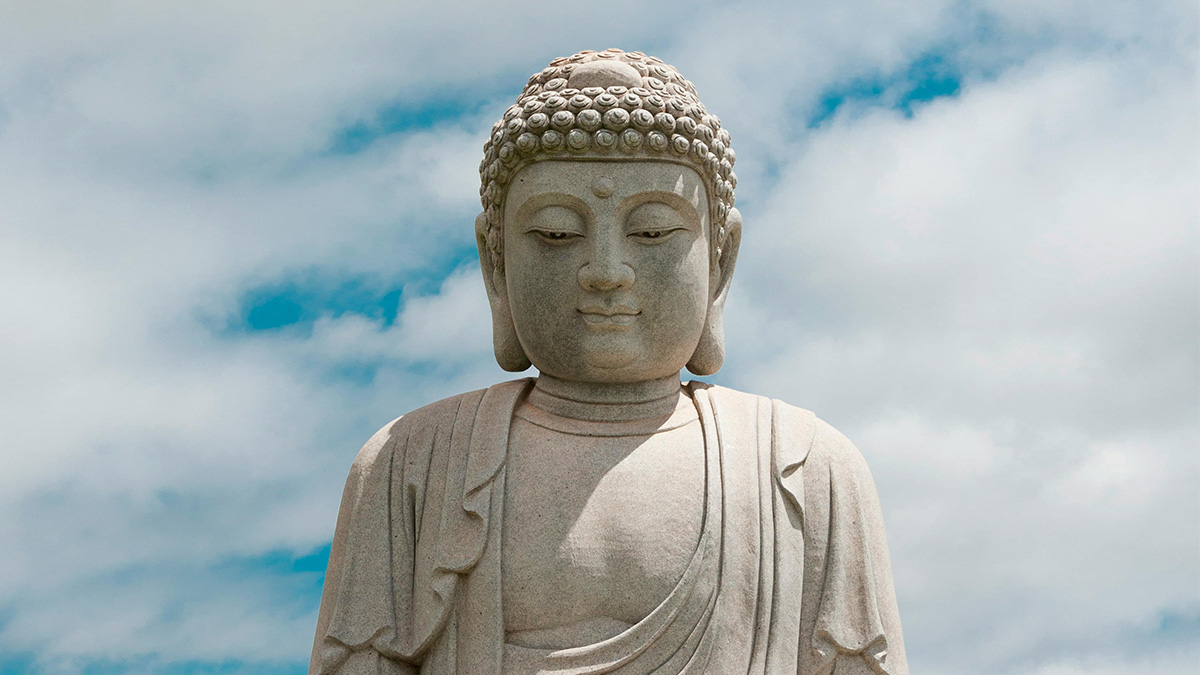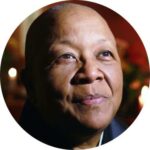Question: I like to ask myself, “What would the Buddha do?” As an exercise, I think it helps me to be more compassionate, but I also know I’m just guessing. Is there any way I can know what the Buddha would do in my situation?
Myokei Caine-Barrett: As a Nichiren Buddhist, I rely on the teachings of the Buddha in the Lotus Sutra and also those of Nichiren Shonin, who rejected the distinction between buddhas and human beings. In “On Attaining Buddhahood,” he wrote, “When deluded, one is called an ordinary being; but when awakened, one is called a buddha. This is similar to a tarnished mirror that will shine like a jewel when polished. …Arouse deep faith and diligently polish your mirror day and night. How should you polish it? Only by chanting Namu-Myoho-Renge-Kyo.”
The most important initial step is to connect with buddhanature and develop it.
The ten realms (hell and the realms of hungry ghosts, animals, asura, humans, heavenly beings, sravakas, pratyakebuddhas, bodhisattvas, and buddhas) are mutually possessed. That means that when one is in hell, the other nine realms are also present and can be accessed through one’s practice. It also means that the realm of buddha is always present within one’s life. Most of us can conceptualize the first six realms and their presence within our lives; the idea of the buddha within, however, may be a bit more difficult to accept.
Faith or belief is not a requirement, nor is understanding, since the most important initial step is to connect with buddhanature and develop it. In my own journey, over time, the darker aspects of my thinking disappeared. Suicide, which I had once contemplated, was no longer even a thought. As I continued to walk this path, my ability to lie was seriously diminished; I found that I could not go against the moral core that was developing within. At every moment when I was at a point of choice, I found it easier to make the choice in accord with the fundamental tenets of the faith tradition I was following. This was not about blindly following someone else’s way—
I also learned to challenge everything about the path I was following to prove its reliability, not only for myself but also for others in my circle of friends.
In “Merits of Chanting the Odaimoku,” Nichiren Shonin wrote, “Mugwort grass grows straight amidst the hemp field. Trees do not grow straight, but by cutting them straight, they become useful. If you chant the sutra as it states, your mind will be straightened” (emphasis mine). With time, this became almost as natural as breathing. I no longer had to ask myself whether I walked my path correctly; I simply responded in a manner that reflected a great desire to truly become like the Buddha. It is now intentional and allows me to fulfill my purpose with great joy. The key is the continuing consistency of my practice and adherence to the path upon which I have embarked.
Dave Smith: This thought exercise will provide the best outcome if the inquiry is truly a reflection of what the Buddha would do—not what he would think, believe, or know. It’s important to first acknowledge any unconscious biases we’ve developed in our dharma practice. It is commonly assumed that dharma practice is about developing a “knowing” of something we don’t already know, the idea being that if we develop the “correct” view on reality, then we will eliminate our suffering.
But dharma practice is a behavioral system, not a belief system. For instance, we all know that things change; for many of us, the knowing of impermanence may come easily. However, when we are faced with real change and loss, how well do we handle it? Are we able to practice in the context of that situation without getting swept away into a destructive narrative?
Likewise, most of us believe compassion is the wise response to pain, both our own and others’, but when faced with real distress and confusion, how much access to a compassionate response do we have?
Through mindfulness, I can recognize the multiplicity of potential choices and outcomes in any given scenario.
The Buddha taught a “know how to do” framework. This focus on doing rather than knowing helps us as we attempt to
navigate the complexity of our lives here and now. For myself, drawing on the three trainings of the eightfold path—ethics, meditation, and wisdom—I find there are three steps I can take that are supportive in making constructive choices. I have discovered again and again that this process builds confidence in myself and in the dharma, cultivating inner resources to meet external demands.
First, I ask, “Can I use the power of wisdom to break free from seeing the situation as dualistic (good/bad, right/wrong, fair/unfair)?” By developing a complete perspective in the moment (right view), I can open to the possibility of multiple outcomes within a complex situation; from there, I can make a choice that is not dictated by extremes and deficiencies.
Next, I consider if I can use the power of mindfulness to counteract the onset of reactivity. Through mindfulness, I can recognize the multiplicity of potential choices and outcomes in any given scenario, in turn enhancing my ability to proceed with presence, ease, and clarity.
The last question is “Can I use the power of ethics and my own sense of personal integrity to move toward action that may provide a constructive outcome?” Can I find faith that the process of trial and error, backed by a willingness to take new avenues of behavior, will pay off in the long run? This faith is the trust that if we take care of the dharma, it will take care of us.
Lama Karma Yeshe Chödrön: Knowing that we do not know, while daring to trust that we can, is a fertile place of practice. This trustful yearning signals ripeness for a view spacious enough to hold the paradox of embodying a mind enlightened by nature, yet confused by habit, in all its nondual fecundity, here and now.
Many Buddhist practices across traditions cultivate view. Integrating the Buddha’s view aligns our conduct with his;
otherwise, we may sense a lack of guidance. Jamgon Kongtrul Lodro Thaye, the Tibetan Rimé master, explained:
Meditation without view
Is like wandering across a vast plain without sight.
View without meditation
Is like climbing a sheer cliff without arms.
For me, meditative inquiry is the key. Uniting samatha and vipassana, meditative inquiry harvests prajna, the precise knowledge integral to mind, which itself refines view.
Meditative inquiry can take many forms. One is to harness paradox to contemplate difficult decisions:
Connect with the compassion that accompanies your yearning to know what is best to do in your situation. Compassion extends the wish for happiness, free of suffering, that drives our every word, thought, and deed to all beings. Allow that same compassion to soften fixed ideas about yourself, others, hopes, fears, and results.
Practice letting false binaries fall away. Good/bad, right/wrong, me/them dichotomies roil the mind, clouding its innate capacity to know. Releasing them encourages ease and lucidity.
Meditative inquiry fosters self-knowledge, confidence in mind’s intrinsic resources, and exquisite responsiveness to our inner landscape.
Relax into lucidity, the knowing quality of mind, not pinning anything down.
Now, open to the paradox of buddhanature present in all its fullness, right within your lived experience of uncertainty. Holding paradox activates the mind’s inherent creativity, deft at discerning opportunity. In dynamic poise, alternate between rest and discernment, as appropriate.
From that place of easeful discernment, revisit the issue, prioritizing your path to manifesting buddhanature, beyond self or other, guessing or knowing, hopes or fears.
Meditative inquiry does not yield pat answers. Rather, it fosters self-knowledge, confidence in mind’s intrinsic resources, and exquisite responsiveness to our inner landscape. It can also help unearth and reevaluate assumptions underlying emotional patterns. At its most transformative, it is the heart of the integrative dharma practice that cultivates view progressively, all the way to transcending views altogether. Ultimately, meditative inquiry unveils nondual wisdom, the mind’s true nature.
It takes humility to allow our view—of an issue, self, others, reality—to be right developmentally in this moment, and then to be released, ever so gently, in the maturity of the next. The more we shed misperception, the more we refine prajna, tweaking our inner compass toward bodhi-north.
Receptivity to buddhanature unfolds in unexpected ways. Confident trust blooms, intimacy with mind deepens. This is prajna rising, how we come to know as the Buddha knows.




